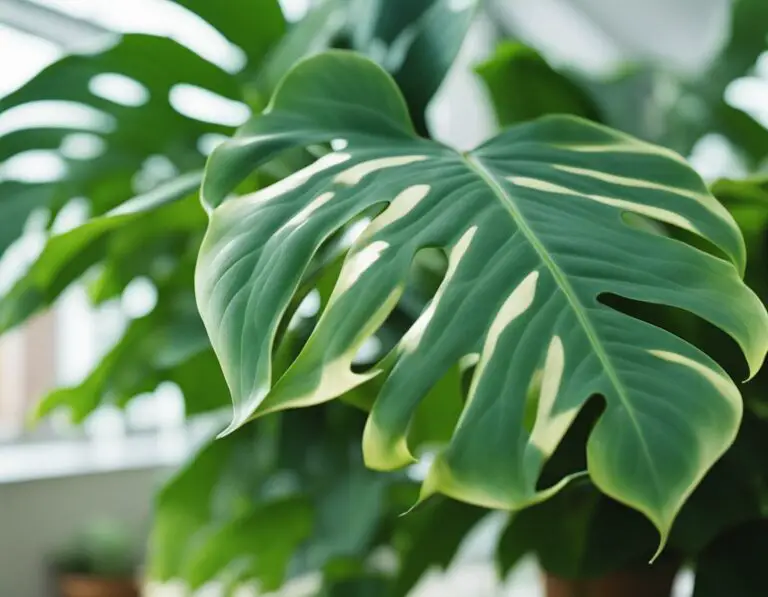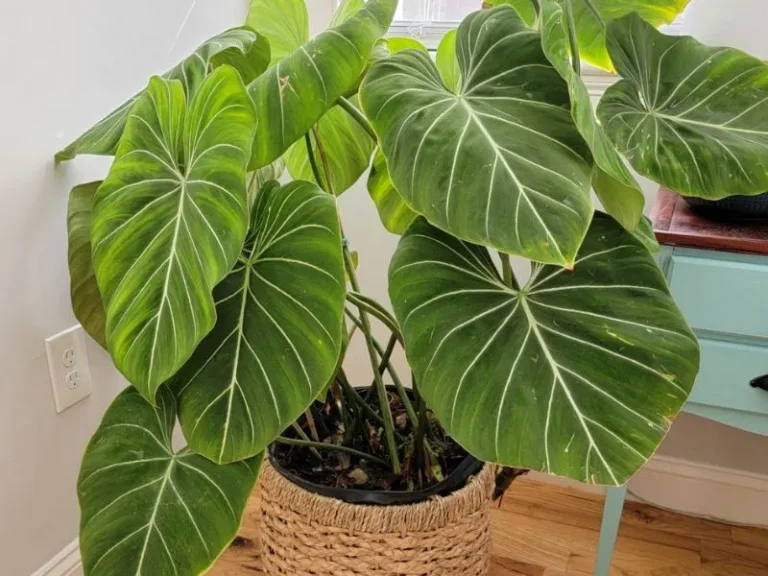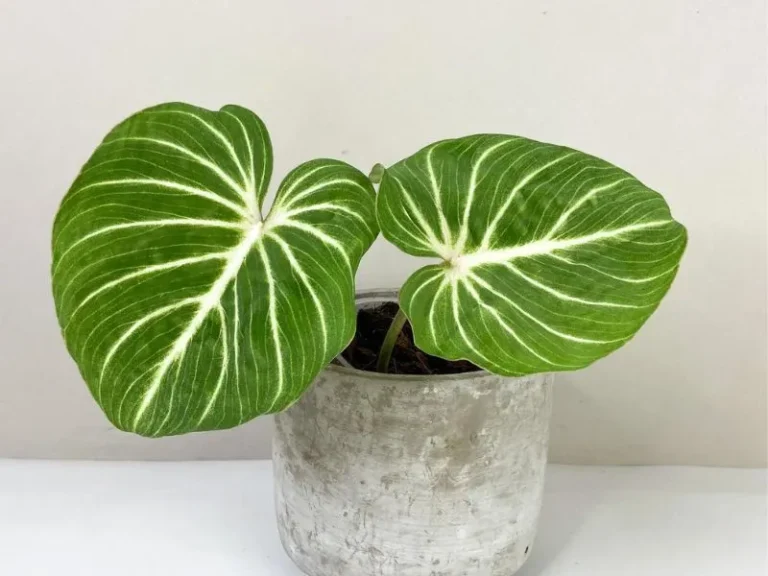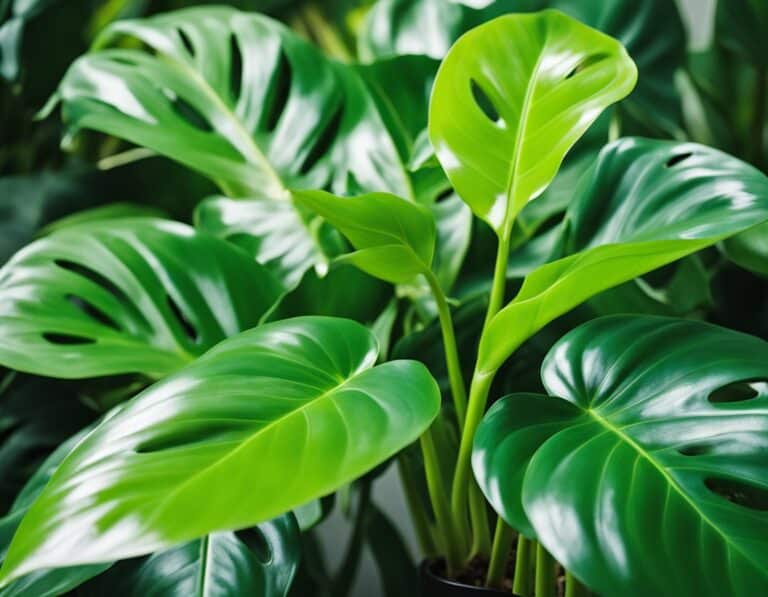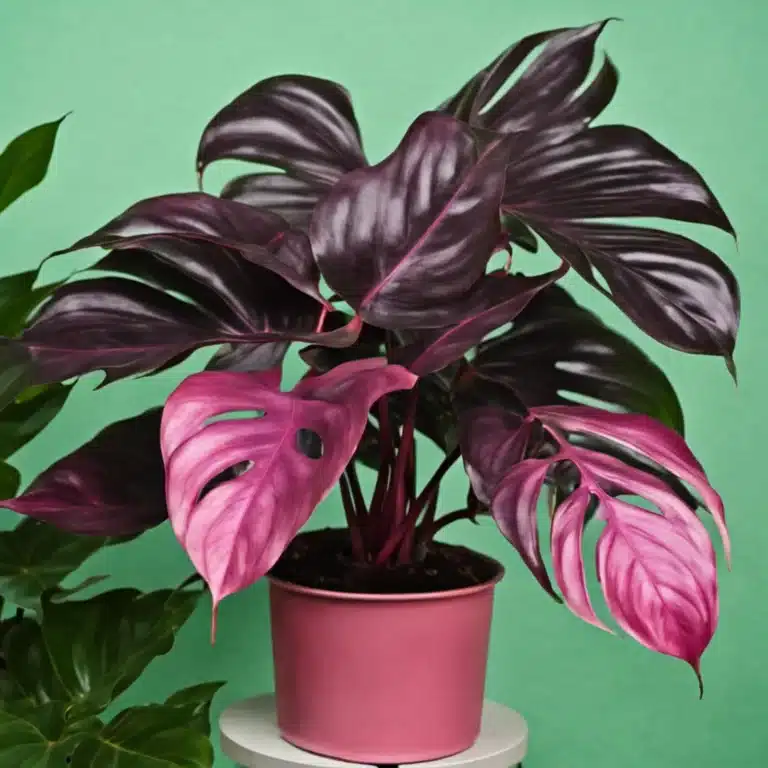Alocasia Nairobi Nights: A Guide to Growing and Caring for this Stunning Plant
If you’re looking for a unique and striking houseplant, look no further than Alocasia Nairobi Nights. This exotic plant is native to Southeast Asia and is known for its dark, almost black leaves that shimmer in the moonlight. But that’s not all that makes this plant special – it also has pink petioles that contrast beautifully with its large, shiny green leaves and white veins.

Caring for your Alocasia Nairobi Nights may seem daunting at first, but with a little knowledge and attention, you can keep this plant thriving for years to come.
From proper watering and lighting to fertilizing and pruning, there are a few key steps you can take to ensure your plant stays healthy and happy. And if you’re feeling adventurous, you can even try propagating your Alocasia Nairobi Nights to share with friends or expand your own collection.
Key Takeaways
- Alocasia Nairobi Nights is an exotic houseplant with dark, shimmering leaves and pink petioles.
- Caring for your Alocasia Nairobi Nights requires attention to watering, lighting, fertilizing, and pruning.
- With proper care, your Alocasia Nairobi Nights can thrive for years to come, and you can even propagate it to share with others.
Discovering Alocasia Nairobi Nights

If you’re a plant enthusiast, you’ve probably heard of Alocasia Nairobi Nights. This stunning plant is a popular choice for both indoor and outdoor gardens. In this section, you’ll learn about the origin and botanical background as well as the characteristics and appearance of this unique plant.
Origin and Botanical Background
Alocasia Nairobi Nights is a tropical plant native to Southeast Asia. It belongs to the Araceae family, which includes other popular houseplants like the Monstera and Philodendron.
The plant is known for its large, shiny green leaves with prominent white veins and pink petioles. Over time, the plant can form an impressive clump, making it a great choice for landscape design.
Characteristics and Appearance
The Alocasia Nairobi Nights is a striking plant that can add a touch of exotic beauty to any garden. The plant can grow up to 3 feet tall and 2 feet wide, making it a great choice for both indoor and outdoor spaces.
One of the most unique features of this plant is its pink petioles, which contrast beautifully with the large, shiny green leaves and white veins. The plant is relatively easy to care for, but it does require some attention to ensure it thrives.
To summarize, Alocasia Nairobi Nights is a tropical plant that belongs to the Araceae family. It’s known for its large, shiny green leaves with prominent white veins and pink petioles. The plant can grow up to 3 feet tall and 2 feet wide, making it a great choice for both indoor and outdoor spaces.
Caring for Your Alocasia Nairobi Nights

Alocasia Nairobi Nights is a strikingly beautiful plant with deep, dark leaves that seem to shimmer under the moon’s pale glow. If you want to keep your Nairobi Nights healthy and thriving, you must provide it with the right growing conditions, watering, feeding, and protection from common pests and diseases.
Optimal Growing Conditions
To keep your Alocasia Nairobi Nights healthy, you must provide it with optimal growing conditions. Nairobi Nights loves consistent, warm temperatures, so aim for 65°-85°F (18°-29°C) as an ideal temperature range for your plant. Keep your plant away from cold temperatures, as well as cold drafts from vents, windows, and doors.
Nairobi Nights grows best in bright, indirect light. Avoid direct sunlight, as it can scorch the leaves. You can place your plant in a window facing east or west, indoors. If you put your plant in a place that is too dark, it will consistently shed its oldest leaves.
Watering and Feeding
Watering is essential for the growth of your Alocasia Nairobi Nights. Water your plant when the top inch of soil is dry to the touch. Avoid overwatering, as it can lead to root rot. Nairobi Nights needs well-draining soil to prevent waterlogging.
Feeding your plant is also important to provide it with the necessary nutrients. Use a balanced liquid fertilizer once a month during the growing season (spring and summer) to promote healthy growth. You can reduce the frequency of feeding during the dormant season (fall and winter).
Common Pests and Diseases
Alocasia Nairobi Nights is susceptible to common pests and diseases, such as spider mites, mealybugs, and bacterial leaf spot. Inspect your plant regularly for signs of infestation, such as yellowing leaves, webbing, or white cotton-like substances.
If you notice any signs of pests or diseases, take immediate action to protect your plant. You can use insecticidal soap or neem oil to control pests, and copper fungicides to treat bacterial leaf spot. Always follow the instructions on the product label and avoid using harsh chemicals that can harm your plant.
With proper care and attention, your Alocasia Nairobi Nights can thrive and become a stunning addition to your indoor garden. Remember to provide it with optimal growing conditions, watering, feeding, and protection from common pests and diseases.
Propagation Techniques
If you want to grow more Alocasia Nairobi Nights plants, you can propagate them using division or stem cuttings. Both methods are easy to do and can yield successful results.
Division
To propagate your Alocasia Nairobi Nights plant using division, you need to carefully remove the plant from its pot and gently separate the root ball into two or more sections. Each section should have at least one healthy stem and root system.
Once you have separated the sections, you can pot each one in a new container with fresh soil. Make sure to water them well and keep them in a warm, humid environment until they have established new roots.
Stem Cuttings
Another way to propagate your Alocasia Nairobi Nights plant is by using stem cuttings. To do this, you need to cut a healthy stem from the parent plant, making sure it has at least one leaf attached.
Next, you should dip the cut end of the stem in rooting hormone powder and plant it in a pot filled with moist potting soil. Cover the pot with a plastic bag to create a humid environment, and place it in a warm, bright location.
After a few weeks, your stem cutting should start to grow new roots and leaves. Once it has established a strong root system, you can transplant it into a larger pot with fresh soil.
Remember to keep your new plants well-watered and in a warm, humid environment until they have fully established themselves. With a little patience and care, you can easily propagate your Alocasia Nairobi Nights plants and enjoy their stunning beauty in multiple locations throughout your home.
Designing with Alocasia Nairobi Nights
Alocasia Nairobi Nights is a stunning plant that can add a touch of tropical elegance to your indoor space. Here are some ideas for displaying and pairing your Nairobi Nights:
Indoor Display Ideas
- Solo Statement Piece – With its striking dark green leaves and pink petioles, Nairobi Nights can be a beautiful standalone statement piece in your living room or bedroom. Place it in a decorative pot that complements its unique coloration and place it in an area with bright, indirect light.
- Group Display – Create a lush jungle vibe by grouping Nairobi Nights with other tropical plants such as ferns, palms, and snake plants. This grouping can be placed in a corner or on a plant stand for maximum impact.
- Hanging Display – Nairobi Nights can also be hung from the ceiling using a macrame plant hanger or a wall-mounted bracket. This creates a dramatic display that allows the plant to cascade down, showcasing its beautiful leaves.
Companion Plants
- Calathea – Pair Nairobi Nights with a Calathea plant for a stunning display of contrasting foliage. The Calathea’s unique patterns and colors will complement the Nairobi Nights’ dark green leaves and pink petioles.
- Philodendron – Nairobi Nights can also be paired with a Philodendron plant for a lush, tropical look. Philodendrons have a similar growth habit to Nairobi Nights and can create a beautiful contrast when placed together.
- Spider Plant – For a more minimalist look, pair Nairobi Nights with a Spider Plant. The Spider Plant’s spiky leaves and trailing vines will complement the Nairobi Nights’ unique coloration without overwhelming it.
Remember to keep your Nairobi Nights away from cold drafts and temperatures below 60°F. With the right care and display, your Nairobi Nights can be a stunning addition to your indoor space.
Troubleshooting Common Issues
Alocasia Nairobi Nights is generally a low-maintenance plant, but it can still face some issues. Here are some common issues you may encounter and how to troubleshoot them:
Yellowing Leaves
If you notice yellowing leaves on your Alocasia Nairobi Nights, it could be a sign of overwatering or underwatering. Check the soil moisture level by sticking your finger about an inch into the soil.
If it feels dry, it’s time to water your plant. If it feels wet, hold off on watering for a few days. Also, make sure your plant is not getting too much direct sunlight as this can also cause yellowing leaves.
Brown Edges on Leaves
Brown edges on leaves are usually a sign of low humidity levels. Alocasia Nairobi Nights prefers a humid environment, so you may need to increase the humidity around your plant. You can do this by misting the leaves with water, placing a tray of water near the plant, or using a humidifier.
Pest Infestation
Alocasia Nairobi Nights can be susceptible to pests such as spider mites and mealybugs. If you notice any signs of an infestation, such as webbing or white cottony patches on the plant, you should take action immediately. You can try wiping down the leaves with a damp cloth or using an insecticidal soap or neem oil spray to get rid of the pests.
Remember, prevention is the best way to avoid these issues. Make sure to give your plant the right amount of water and light, and keep an eye out for any signs of trouble. By following these tips, you can keep your Alocasia Nairobi Nights healthy and thriving.
Frequently Asked Questions
How do I care for an Alocasia Nairobi Nights plant?
To care for your Alocasia Nairobi Nights plant, you should keep it in a warm and humid environment with bright, indirect light. Water the plant when the top inch of soil feels dry and avoid overwatering as it can lead to root rot. Fertilize the plant once a month during the growing season with a balanced fertilizer. Prune any yellow or damaged leaves to encourage new growth.
What are the differences between Alocasia Nairobi Nights and Pink Dragon?
Alocasia Nairobi Nights and Pink Dragon are similar in their care requirements and both have large, velvety leaves. However, Nairobi Nights has pink petioles that contrast with its glossy green leaves and white veins, while Pink Dragon has pink and green variegated leaves. Nairobi Nights also tends to grow taller and wider than Pink Dragon.
Where is the best place in a house to keep an Alocasia plant?
Alocasia plants prefer bright, indirect light and a warm, humid environment. You can place your Alocasia Nairobi Nights plant near a window with filtered sunlight or in a well-lit room. Avoid placing the plant in direct sunlight or in a drafty area.
How big does an Alocasia Nairobi Nights typically grow?
Alocasia Nairobi Nights can grow up to 4 feet tall and 3 feet wide, making it a great statement plant for large spaces. However, the size of the plant can vary depending on its environment and care.
Is the Alocasia Nairobi Nights considered a rare plant?
The Alocasia Nairobi Nights is not considered a rare plant, but it is less common than other Alocasia varieties. Its unique pink petioles and glossy green leaves make it a popular choice among plant enthusiasts.
Why might someone find an Alocasia plant difficult to maintain?
Alocasia plants can be difficult to maintain because they require a warm and humid environment with consistent watering and fertilization. Overwatering can lead to root rot, while underwatering can cause the leaves to wilt and turn yellow. Additionally, Alocasia plants can be sensitive to changes in their environment and may require some trial and error to find the perfect spot in your home.

